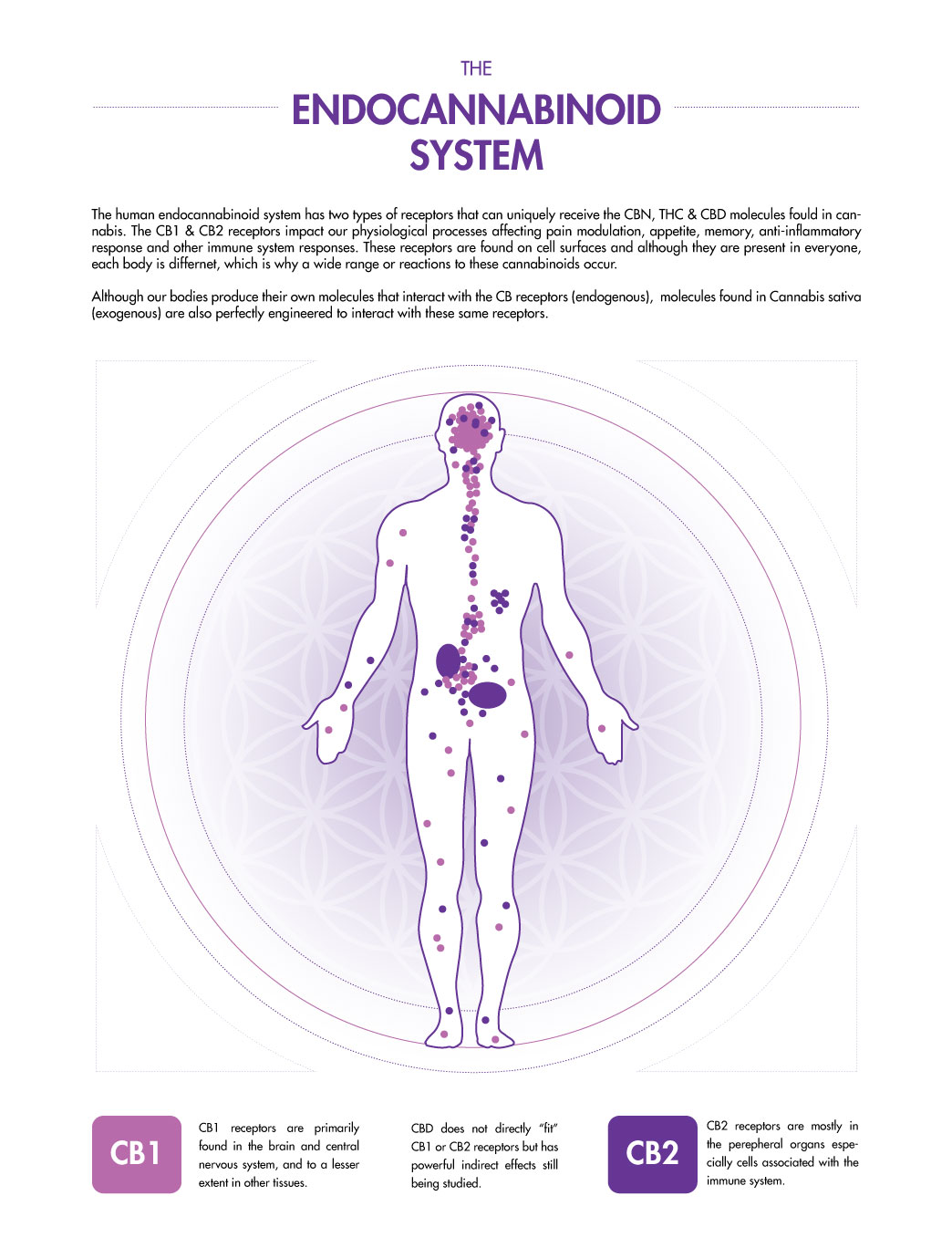
In the 1980s, President Ronald Reagan poured tens of millions of dollars into a study to prove that marijuana damages the human brain. But, rather than showing how marijuana harms the brain, the Reagan administration ended up subsidizing a series of studies that culminated in the discovery of the endocannabinoid system.
The endocannabinoid system (ECS) is a collection of cell receptors and the corresponding molecules (agonists) in the human body. This system helps to regulate sleep, appetite, mood, motor control, immune function, pleasure, pain, reproduction and fertility, memory and temperature regulation.
When the ECS is in balance, one experiences homeostasis. Endocannabinoids are the molecules that act as chemical messengers that bind to cannabinoid cell receptors and tell the body to do certain things. The human body naturally produces endocannabinoids with the help of consuming foods like fatty acids found in nuts and fish. The 60 cannabinoid molecules found in cannabis also can bind to cannabinoid receptors. Although different cannabinoids (like CBD and THC) cause different effects, it is all through the same system that similar molecular messages are sent throughout the body. Put more simply, the molecules found in cannabis plants aid in the human body’s endocannabinoid system, which is responsible for many vital functions.
